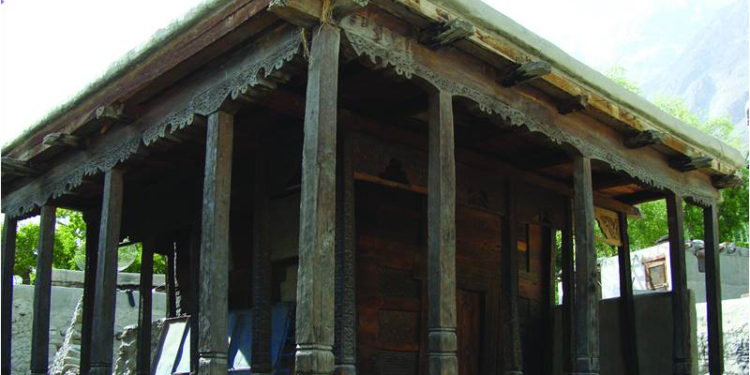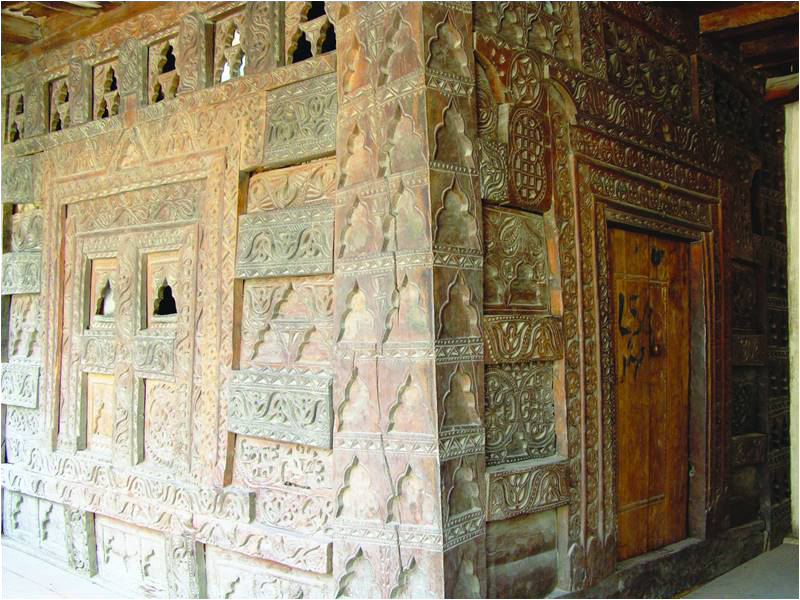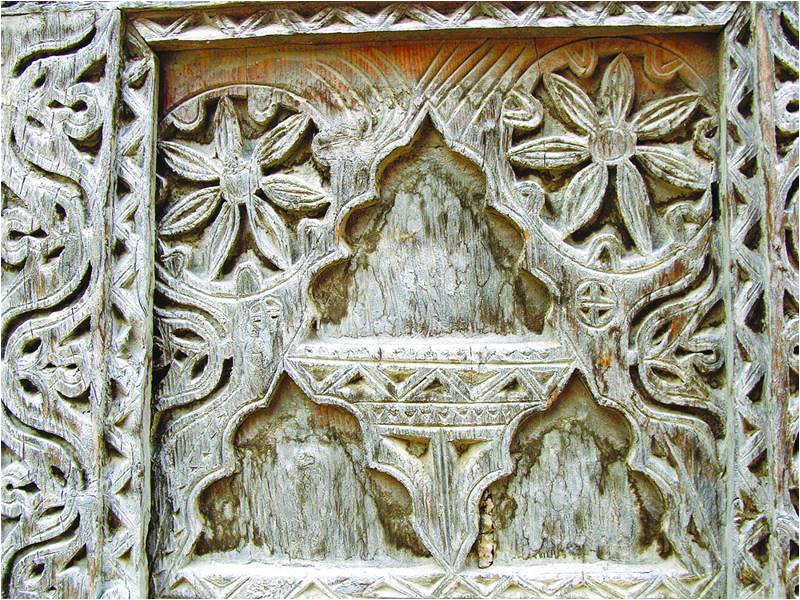
Ganish is believed to have been founded by Shish Kin, a Chinese visitor. After him many other people and tribes, namely the Shigri from Baltistan and the Hamachiting settled down in Ganish.
Zulfiqar Ali Kalhoro
Ganish, a beautiful village in the Hunza valley in Gilgit-Baltistan, is known for its rich history, splendid wooden mosques, impressive village guest house and the imposing towers that mark the landscape. It is situated on the right bank of the Hunza River and is one of the oldest settlements of the valley.
Ganish has been home to many tribes and caravans traveling through the ancient Silk Route that stayed back – captivated by the beautiful setting of the village.
There are many interpretations of the name Ganish. Some local people believe that there are three meanings: one, it denotes a crossroads since it is located on the junction of Hunza and Nagar. Second, it means the gold that people in the past used to prospect from the waters of the Hunza River. Third, it means a place from where a road takes you somewhere. People who prospect gold from the River Hunza can still be found. They are locally called maruts. In fact, maruts are also found along the Ghizer, Gilgit and Indus rivers. They camp on the riverbank and look for the precious metal.
Ganish is believed to have been founded by Shish Kin, a Chinese visitor. After him many other people and tribes, namely the Shigri from Baltistan and the Hamachiting settled down in Ganish. Then a number of prominent persons whose names survive made Ganish their home. Their descendants bear their names.

The descendants of one Barcha are called Barchating. He had three sons: Sukh after whom the Sukhkutz is named, Barah from whom sprang Brahkutz and Bak, after whom Bakkutz was named. When they embraced Islam, some of the families of the Barchating, Raley Ramal and Shish Kin lineages built mosques which carried their names. Some also built towers to keep an eye on intruders from the outsiders.
There were a total of 14 of these sentry towers – of which three survive today. These include Tamurkutz tower, Shaikutz tower and Rupikutz tower. The others namely Dodasen tower and Lutoting tower are believed to have been swept away by the flood that inundated Ganish village in 1958. The towers indicated the power of the each lineage that erected it. The tradition of erecting towers still continues in the tribal valleys of Gilgit-Baltistan and Kohistan in Khyber-Pakhtunkhwa. At present, in the valleys of Darel and Tangir in Diamer district, the height of the tower indicates the power that the builder wields in the village. The height of the tower even indicates the number of murders that the builder has committed – the more you have killed, the higher you build your tower. Once, there were also several watch towers dominating the village of Koranga Bala in Tangir valley, which were erected to control and give safe passage to caravans who took away the iron ore from Satil, a communal pasture of Tangir.
There are a total of eight mosques in Ganish Khun which carry the names of the lineages which include Budinkutz, built by Budin; Shaikutz, built by Shai; Kuyokutz, built by Kuyo I; Kuyokutz II; Yarikutz, built by Yari; Mamorokutz built by Mamoro; Rupikutz built by Rupi and Balkhankutz built by Balkhan.
Except for Balkhankutz, all other mosques are one-chambered. Of these, however, the Mamorokutz, Rupikutz, Harikutz and Shaikutz are noted for intricate carvings. The Mamorokutz, Rupikutz, Harikutz and Kuyokutz mosques are located at the jataq in Ganish Khun. The jataq is an open space used for communal gatherings. Ritual congregations, dancing and singing festivities also take place in the jataq.

The Rupikutz mosque which was restored by Aga Khan Cultural Service Pakistan (AKCSP) is noted for its floral and geometric designs. Motifs of the lotus flower and swastika are found on the Rupikutz mosque. The swastika has been the favorite design of the artists in the Hunza valley. One finds the most impressive swastika designs on the pillars of the Qirghiz Bhai house in Ghulkin, Gojal. The mosques at Altit and Baltit forts also bear swastika designs.
The mosques of Budinkutz, Kuyokutz II and Mamorokutz bear swastika designs. The door frame of the Budinkutz mosque also carries it, as do the door frame and bracket volutes of the Kuyokutz II mosque’s pillars.
Both Rupikutz and Mamorokutz have stupa-like niches. The decoration on these two mosques is remarkable as compared to other local mosques.
Apart from mosques, the other historical building that dots the landscape of Ganish Khun is the Sawab-Ha (village guest house) which is believed to have been built by the Oyumkutz family for the travelers. The travelers passing through the Silk Route were given food and accommodation free of cost in the village guest house. It is two-story building located near the Pharee (pond). The carvings on the guest house indicate the aesthetic and taste of the builders. This guest house was also restored by the AKSCP.
___________________
 Dr. Zulfiqar Ali Kalhoro is an anthropologist and has authored 12 books: ‘Symbols in Stone: The Rock Art of Sindh’, ‘Perspectives on the art and architecture of Sindh’, ‘Memorial Stones: Tharparkar’ and ‘Archaeology, Religion and Art in Sindh’. He may be contacted at: zulfi04@hotmail.com
Dr. Zulfiqar Ali Kalhoro is an anthropologist and has authored 12 books: ‘Symbols in Stone: The Rock Art of Sindh’, ‘Perspectives on the art and architecture of Sindh’, ‘Memorial Stones: Tharparkar’ and ‘Archaeology, Religion and Art in Sindh’. He may be contacted at: zulfi04@hotmail.com
Courtesy: The Friday Times Lahore